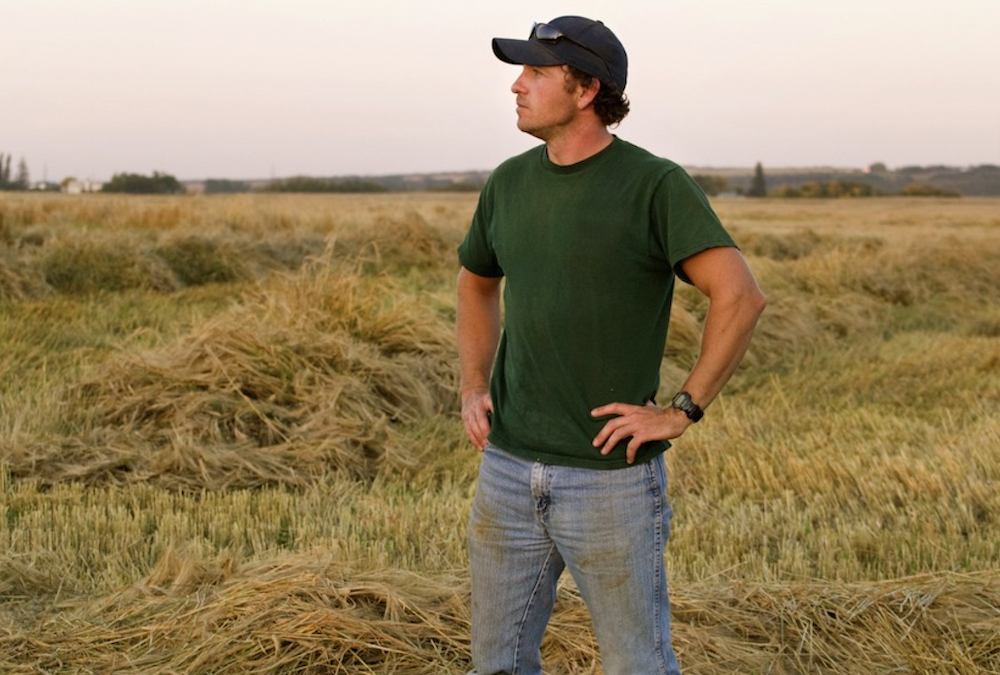There are right ways and wrong ways to solve problems. This is a fact. It’s real. Fortunately, though, problem-solving is a learnable skill. We can all get better at it.
The Oxford dictionary defines a problem as “a matter or situation regarded as unwelcome or harmful and needing to be dealt with and overcome.” Meanwhile, Dictionary.com says a problem is “any question or matter involving doubt, uncertainty or difficulty.” And the Collins dictionary calls it “a question, matter, situation, or person that is perplexing or difficult.”
Three definitions, and they each get a “check, check, check” if you think of the myriad farm problems you face every day.
Read Also

The big squeeze: How to be fair to siblings during farm succession
Managing sibling business relationships on family farms.
Tackling a problem is not just about recognizing that you have a problem, it’s figuring out what sort of problem you’re dealing with. Similar to an unwanted weed, you must first identify the weed and then choose the right spray to kill it once and for all. Otherwise, like the weed whose root is still alive, your problem will keep popping up, leading to an ongoing cycle of wasted time, money and frustration.
Getting to the root of a problem also involves an equally important psychological step. Our brains construct our individual realities based on our unique perception and experiences. This results in systematic errors in thinking called cognitive biases. Additionally, heuristics, the shortcuts that our brains take based on previous similar problem-solving situations, compound the problem. As Wikipedia points out, heuristics are “not guaranteed to be optimal, perfect or rational.”
Together, cognitive biases and heuristics warp how we view a situation. A skewed perspective can make us focus on the wrong problem and influence our decision-making. Some examples of biases that can lead us to misinterpret a problem are anchoring (relying too heavily on the first piece of information you find), confirmation (our tendency to search for, interpret, favour and recall information that confirms or supports prior beliefs), availability (relying on recent examples that come to mind when evaluating a decision), sunk-cost fallacy (reluctance to abandon a course of action because we’ve already invested so much in it — even when it’s clear that ditching it would be beneficial), and additive bias (an inclination to solve problems by adding something even when subtraction is a better choice).
Considering both the psychological and the real-world aspects of a problem will help you streamline the problem-solving process. It will bring the right issue into focus, help you fully assess the problem, and ensure that you avoid rushing to the wrong solution.
Bring the problem into focus
When faced with a problem we often get lost in the weeds. We focus more on the obstacles impeding us from finding a solution and we “ruminate on the problem and its many facets rather than thinking of ways around it,” says Heidi Grant, social psychologist and author, in the article Is Your Team Solving Problems, or Just Identifying Them?
One way to think our way around a problem is to get a microscopic-focused view of the problem we’re dealing with. To do that we need to take the advice of Charles Kettering, a 19th century inventor and engineer, who said that “A problem well-framed is a problem half-solved.” To frame the problem the right way we need to ask the right questions. These questions come from a basic framework, outlined in Dwayne Spradlin’s article Are You Solving the Right Problem? which “makes an important difference in how you approach the problem.” They are: What is the desired outcome? What other approaches have you tried? What are the internal and/or external constraints on implementing a solution? Is the problem really only one issue or are there actually many problems? How will you implement the solution and how will you know it has worked?
Sometimes, you might need to reframe the problem. Look at it or think about it in a new or different way. Doing so will draw your attention to aspects that you might not have initially considered. The point of reframing is “not to find the real problem, but, rather, to see if there is a better one to solve,” says Thomas Wedell-Wedellsborg in Are You Solving the Right Problems? Again, remember that you’re trying to target the root of the problem so it doesn’t keep recurring.
Framing a problem can also require systems thinking. Systems thinking is a holistic way — that is, viewing systems as wholes, not merely as a collection of parts — to explore and develop practical actions in complex situations. Rather than strip a problem down into parts, a systems approach can help you pinpoint how various parts of the problem currently interact, or could interact, highlighting potential solutions in an “aha-lightbulb” way.
Also think of cognitive biases and heuristics. Simply being aware that they could be affecting your thinking is often enough to severely weaken their effect.
How to get from here to there
So, how do you get from “Houston, we have a problem” to identifying and gathering all the right tools, fixing the problem and landing safely back on earth?
While you shouldn’t rely on a checklist to diagnose your problems, because, as Wedell-Wedellsborg writes, that “tends to discourage actual thinking,” here are some tactics to experiment with:
Thought experiments. Einstein — and other famous thinkers throughout history — have used thought experiments to solve some of humanity’s biggest problems. Thought experiments are literally that: running experiments in your mind. The non-physical lab space in your brain allows you to experiment with multiple solutions in a cost- and time-effective manner.
The five whys. Channel your inner pre-schooler and ask “why” at least four times (often more) to get to the root cause of a problem. For example: Why did the silo stop working? Because the belt broke. Why? Because it was worn out. Why? Because we haven’t scheduled regular yearly checkups. Why should we do that? To avoid the unproductive downtime required to fix it (probably on Christmas morning!). Each “why” brings you closer to the root cause of a problem and, consequently, a long-term solution.
Think backwards. Wedell-Wedellsborg suggests that another way to frame a problem and find solutions is to think about a time when the problem did not occur. “Ask yourself ‘What was different about that situation?’ Exploring such positive expectations, sometimes called bright spots, can often uncover hidden factors.” (Check out my March 2022 article for more on bright spots.) Another way to think backwards is “instead of leaping forward to a solution, go backwards to map out how you got there in the first place,” says Daniel Marcovitz in his article How to Avoid Rushing to Solutions When Problem-Solving.
Also think about how you make toast. Really. Watch Tom Wujec’s TED Talk here.
Cultivate curiosity too. Curiosity is an essential characteristic of a well-trained problem-solver.
Also put outside sources into perspective. Off-farm advisors (or people in your Twitter network) can’t necessarily solve the problem for you, but they can offer different perspectives. Remember though that the role of outsiders is not to solve the problem. “They are there to stimulate the problem owners to think differently,” writes Wedell-Wedellsborg. “So, when you bring them in, ask them specifically to challenge your thinking.”
Embrace a paradox mindset. Teach yourself to become energized by problem-solving. Even make it a bit fun. It will kindle your creative problem-solving fire.
Shane Parrish writes in his blog, Thought Experiment: How Einstein Solved Difficult Problems, that even a drunk person arriving home will eventually manage to fit their key in the lock.
If you make enough random stabs in the dark, you will, in all probability, eventually get to a “workable” solution.
But on the farm efficiency is paramount. So, try one or several of the suggestions above to help you become an expert problem-solver. After all, as economist Herb Simon said, “Solving a problem simply means representing it so as to make the solution transparent.”
















